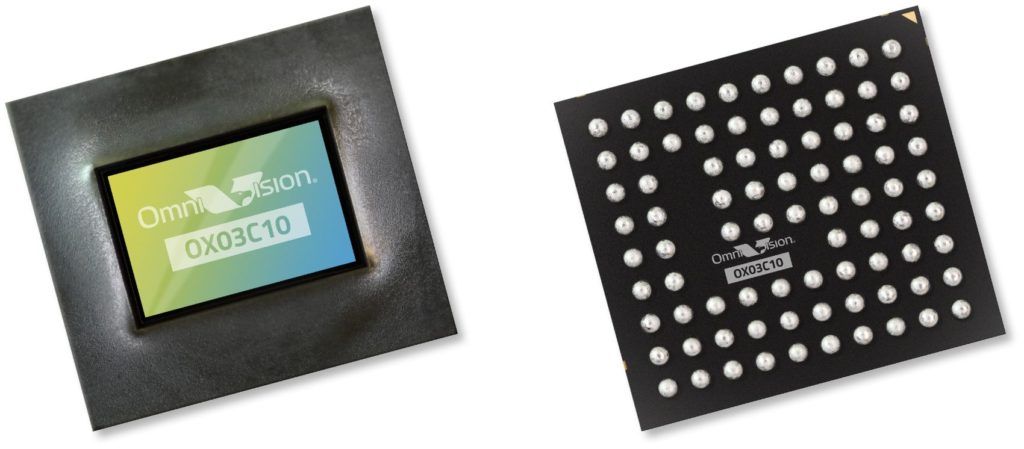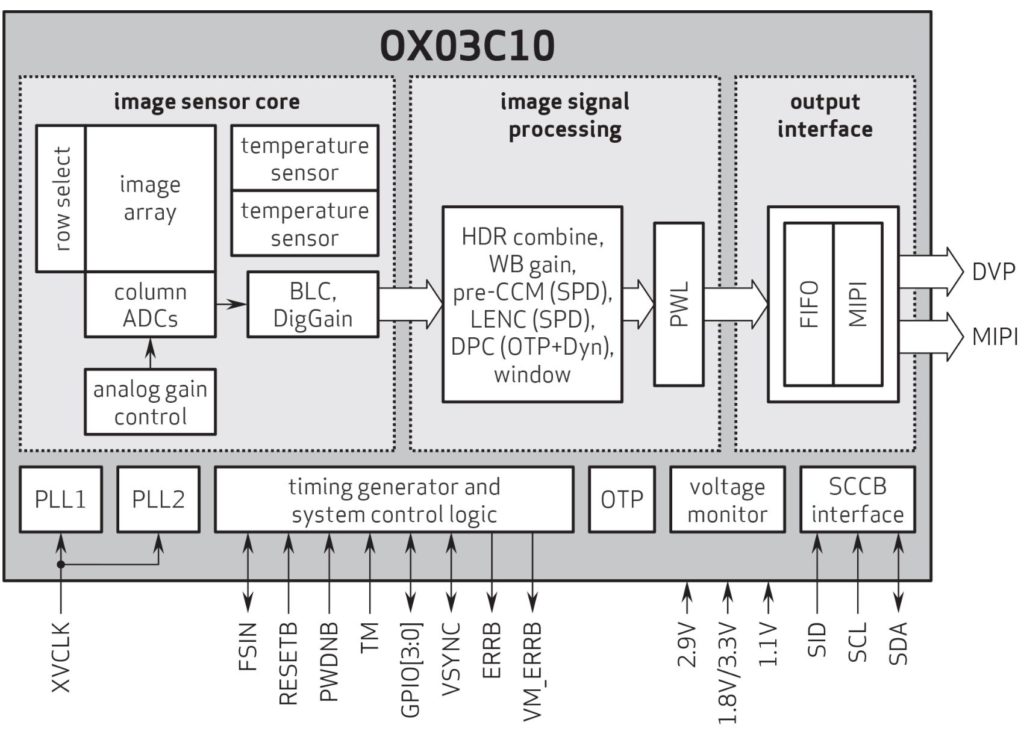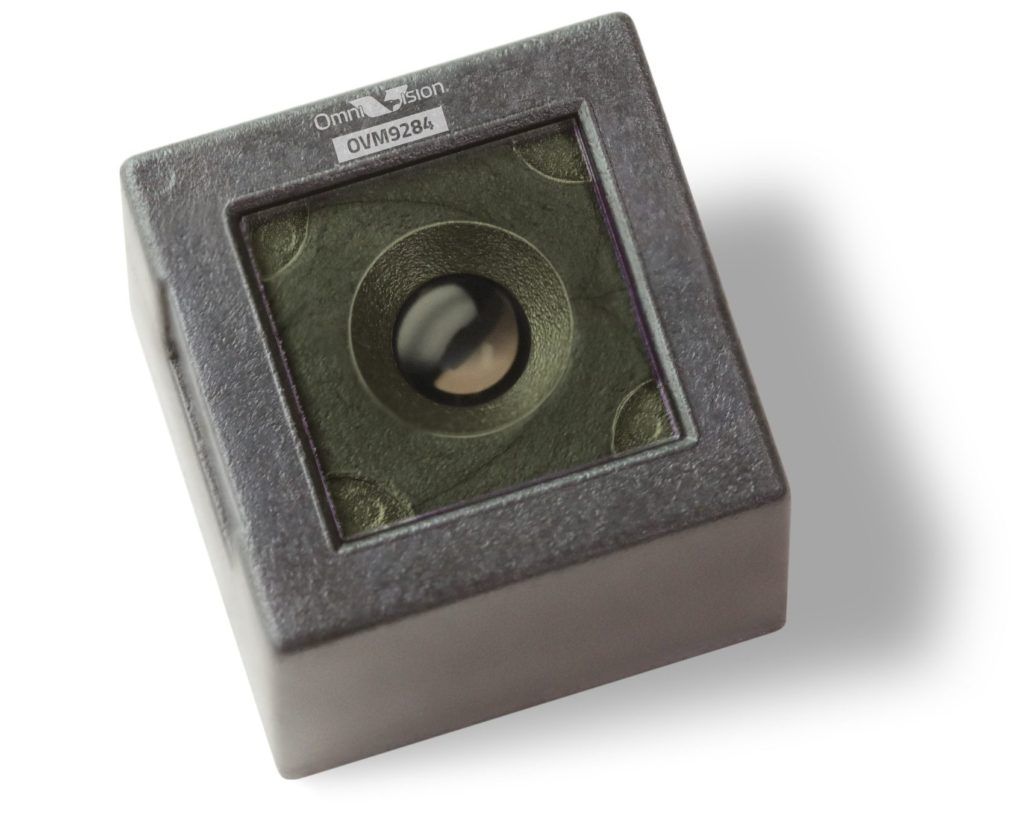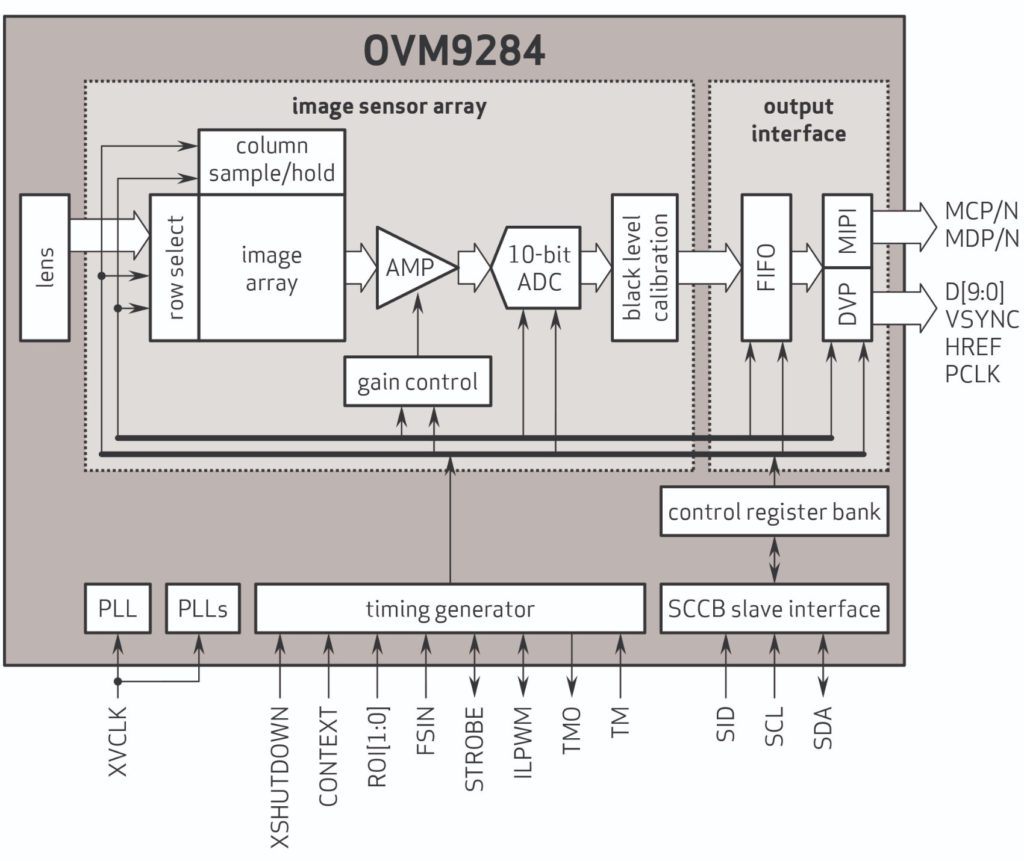OmniVision has unveiled a pair of new imaging solutions for the ADAS and vehicle perception technology markets. The two new products, the OX03C10 ASIL-C automotive image sensor, and the OVM9284 CameraCubeChip module, will address current automotive trends identified by OmniVision’s leaders.
“Customers today are needing to push performance levels higher and higher,” explained Andy Hanvey, Director of Automotive Marketing, OmniVision. “They need better high dynamic range, better LED flicker mitigation, and better low light performance. Customers today need more pixels and smaller ones, but they want to get the same performance they have had in the past.”
What is the OX03C10 ASIL-C Sensor?
The OX03C10 is an automotive image sensor designed for next-generation viewing applications. “Rearview cameras are becoming more critical due to mandates in the U.S. and the EU, and surround-view system adoption is rising quite high,” Hanvey said. “The types of use cases are typically in viewing applications to help make the driver more aware of their surroundings.”
OmniVision’s OX03C10 sensor includes a 3.0-micron pixel size, a high dynamic range (HDR) of 140dB, and optimization for LED flicker mitigation (LFM) performance. According to OmniVision, the OX03C10 is the first of its kind with HDR and LFM that delivers 1920x1280p resolution at the highest rate of 60 frames per second.
“Many stakeholders in the viewing automotive camera market are asking for higher performance, such as increased resolution, 140dB HDR, and top LFM performance,” said Pierre Cambou, Principal Analyst, Imaging, Yole Développement. “In particular, these performance increases are needed for high-end camera monitoring systems, also called e-Mirror, which is growing in popularity.”
“By bringing out the OX03C10 sensor now, the timing aligns well with the automotive OEMs’ next-generation-vehicle start of production,” Hanvey added. “The OX03C10 is ideal for any automotive viewing camera application, including rearview cameras, surround-view systems, and camera monitoring systems, which are called e-mirrors in some regions.”
The OX03C10, which employs a rolling shutter, features 4-lane MIPI CSI-2 and 12-bit DVP interfaces. OmniVision also says the OX03C10 is expected to be AEC-Q100 Grade 2 certified.
OX03C10: Essential Foundations
At the heart of the OX03C10 is a proprietary stacked architecture to increase pixel performance. OmniVision, with this unique architecture, or “stacked die,” achieves a 20 percent improvement in the signal-to-noise ratio compared to the prior generation of its 2.5 megapixel (MP) viewing sensors. With the stacked die arrangement, OmniVision can opt for a wafer-process node for the logic layer, which is different from that of the wafer-process used to create the pixel layer.
The stacked die approach also helps address the issue of size. “If you look at traditional image sensors, you are effectively putting analog and digital all into one piece of silicon, and that can be quite big,” Hanvey explained. “With wafer stacking, we can avoid that.”
In addition to smaller form factors, the stacked die arrangement is ideal for keeping power consumption low while still allowing for high functionality.
“The end result is that, by stacking these layers made with different wafer-process nodes, we can integrate advanced functions inside the image sensor, including our HDR and LFM Engine (HALE), while maintaining the lowest power consumption and the smallest package size,” Hanvey continued. “This could not be achieved with a traditional non-stacked die.”
What is the OVM9284 CameraCubeChip Module?
The OVM9284 is a one MP module with a compact size of 6.5 x 6.5mm for driver monitoring systems (DMS). It remains hidden from an occupant’s view and prevents distracted or drowsy driving by scanning the driver’s face. “Their face is illuminated with 940 nm light,” Hanvey explained. “We use 940 nm so it won’t be visible and cause a distraction for the driver. We use wavelengths that a human eye can’t see.”
“The accelerated market drive for DMS is expected to generate a 43 percent CAGR between 2019 and 2025,” Cambou added. “DMS is probably the next growth story for ADAS cameras as driver distraction is becoming a major issue and has brought regulator attention.”
Similar to the OX03C10, the OVM9284 uses a proprietary architecture. In the case of the OVM9284, it’s a global-shutter pixel architecture versus the rolling shutter of the OX03C10. Global shutter, explained Hanvey, reduces power consumption as it exposes all the pixels at the same time, then places that charge into a storage node for later readout.
“By operating in this manner, instead of using a rolling shutter that requires the DMS system’s LEDs to stay on longer, a global shutter can optimize power consumption by significantly reducing the amount of time the LEDs need to stay on,” he said.
Key Differences Between the OX03C10 & OVM9284
The OX03C10 and OVM9284 share a few common characteristics, namely low power consumption, small size, and high functionality. Each one is important, but how these characteristics are achieved between the OX03C10 and OVM9284 requires two unique approaches.
“The OVM9284 employs wafer-level optics, while the OX03C10 employs wafer-level stacking, which are two completely different things,” Hanvey explained.
Specifically, for the OVM9284, the wafer-level optics help address the need for a small package. The small size of the OVM9284 is made possible by lens optics that are manufactured at the wafer level using OmniVision’s proprietary CameraCubeChip technology.
“This is quite different than the wafer-to-wafer stacking we used in the OX03C10 to integrate more advanced circuitry while maintaining the smallest package size and the lowest power consumption of any image sensor for automotive viewing camera applications,” Hanvey added.
OX03C10 & OVM9284 In-Person
OmniVision will conduct a virtual demo and Q&A session for the OX03C10 and OVM9284 on Friday, June 12th, during AutoSensONLINE. The OX03C10 image sensor is available in both a-CSP and a-BGA packages. Mass production of the OVM9284 module is expected in Q4 of 2020.






